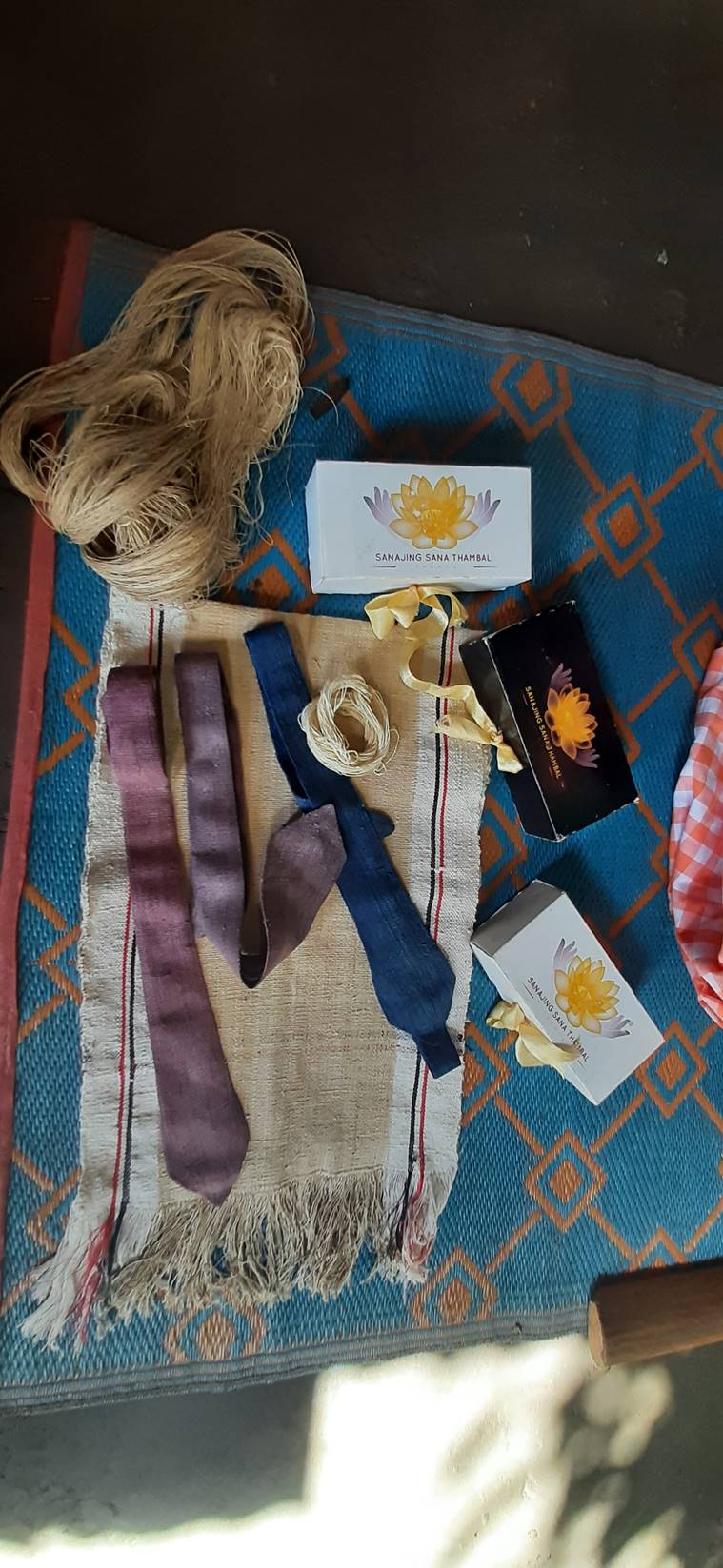Spinning a success story: How a Manipur woman is getting noticed for her lotus fibre products
Bijiyashanti Tongbram lives near the Loktak, the largest freshwater lake in the Northeast region. She is now using lotus stems to weave delicate mufflers and stoles.
 Bijiyashanti Tongbram spinning lotus stems. (Express photo)
Bijiyashanti Tongbram spinning lotus stems. (Express photo) Would you like scarves, stoles, neckties made of yarn spun from lotus stem? This is exactly what Bijiyashanti Tongbram, a 27-year-old from Manipur, is offering her customers, and has caught the attention of many, including Prime Minister Narendra Modi and state Chief Minister N Biren Singh.
Bijiyashanti is now planning to use her painstaking process to create products most in demand today – facemasks.
A graduate in botany honours, Bijiyashanti is the daughter of Joykumar Tangram and Sanahal Tongbram, of Thanga Tongbram village, near Loktak, the largest freshwater lake in the Northeast region. Bijiyashanti Tongbram’s father is a field assistant in the Fishery department of Manipur.
Having graduated from GP Women’s college Imphal, in 2014, Bijiyashanti’s initial plan was to establish agro-tourism in her area. She said she had always been fascinated by the medicinal value of lotus, and she conceived the idea of collecting different varieties of lotus from around the world to start lotus farming. However, due to lack of resources, her plans could not take flight.
Nevertheless, her experiment with lotus’s medicinal properties continued. After acquiring some knowledge in training programmes on entrepreneurship, she successfully developed aromatic lotus tea leaves. “I always wanted to explore the medicinal values of different plants growing in Loktak lake which the locals are not aware of,” said Bijiyashanti.
Amid the struggle to build her own business, in 2018, a piece of advice from a family friend changed her life.
Bijiyashanti said a friend of her father’s told her about how farmers in Myanmar’s inland lakes spin thread from lotus stem for weaving.
“I was hooked to the idea and started doing my own research. The entire 2018 was spent doing research work and experiment.”
 The lotus thread is similar to that of muga silk. (Express photo)
The lotus thread is similar to that of muga silk. (Express photo)
In May 2019, she started spinning yarn from lotus stems and weaving neckties, mufflers, etc., with the help of a handful of women from her locality. Subsequently, she set up an enterprise ‘Sanajing Sana Thambal”, which now has 10 women, including her.
Bijiyashanti said she received mixed responses in the initial stage. “There were people who questioned the feasibility of the practice and how durable the product would be. At the same time, many, including my family, encouraged me,” she said.
Sanajing Sana Thambal was recently selected for Start-Up Manipur. On September 27, PM Modi mentioned her during his ‘Mann ki Baat’ address. “Her efforts and innovations have opened new avenues in the fields of lotus farming and textile,” the Prime Minister said.
Manipur CM Biren Singh also tweeted, “In #MannKiBaat, Hon’ble PM @narendramodi ji appreciated the innovative efforts of Ms. Bijay Shanti from Manipur who’ve launched a start-up to develop thread from Lotus stem, & that her efforts & innovations have opened new avenues in the fields of lotus farming & textile.”
Bijiyashanti is now training women in her district Bishnupur and other districts. After the PM hailed her, she has been contacted by many self-help groups to train them.
Moreover, Bijiyashanti said, she also received calls from outside the state from people interested in buying her products.
However, she maintained that with the manpower at her disposal, it was not possible yet to go for mass production. At present, from collecting the lotus stem, extracting sufficient amount of fibre to produce a single scarf and then weaving it, the process takes about a month.
 Ayingbi, a weaver, explains that as the lotus thread is delicate, using machines is difficult, and they use the traditional handloom. (Express photo)
Ayingbi, a weaver, explains that as the lotus thread is delicate, using machines is difficult, and they use the traditional handloom. (Express photo)
Ayingbi, a weaver working at the enterprise, said the lotus thread is similar to that of muga silk and the only difference lies in the strength. “Muga silk is stronger than lotus. But the finish products are as good as silk”, she said. Ayingbi, who is in her late 50s, does the weaving using the traditional handloom method. “As the lotus thread is delicate, using machines may not be feasible as of now. So, we are using traditional handloom,” she explained.
Giving a demonstration, the 27-year-old entrepreneur took a handful of lotus stem and placed it on a wooden plank with a bicycle rim as its stand, made by her father from an old wooden boat. She then made a slight incision around the stem with a knife and broke it gently to prevent the fibre from severing. The fibre is then hand-rolled to the desired size, after which the yarns is hand-woven using loin loom.







- 01
- 02
- 03
- 04
- 05
























